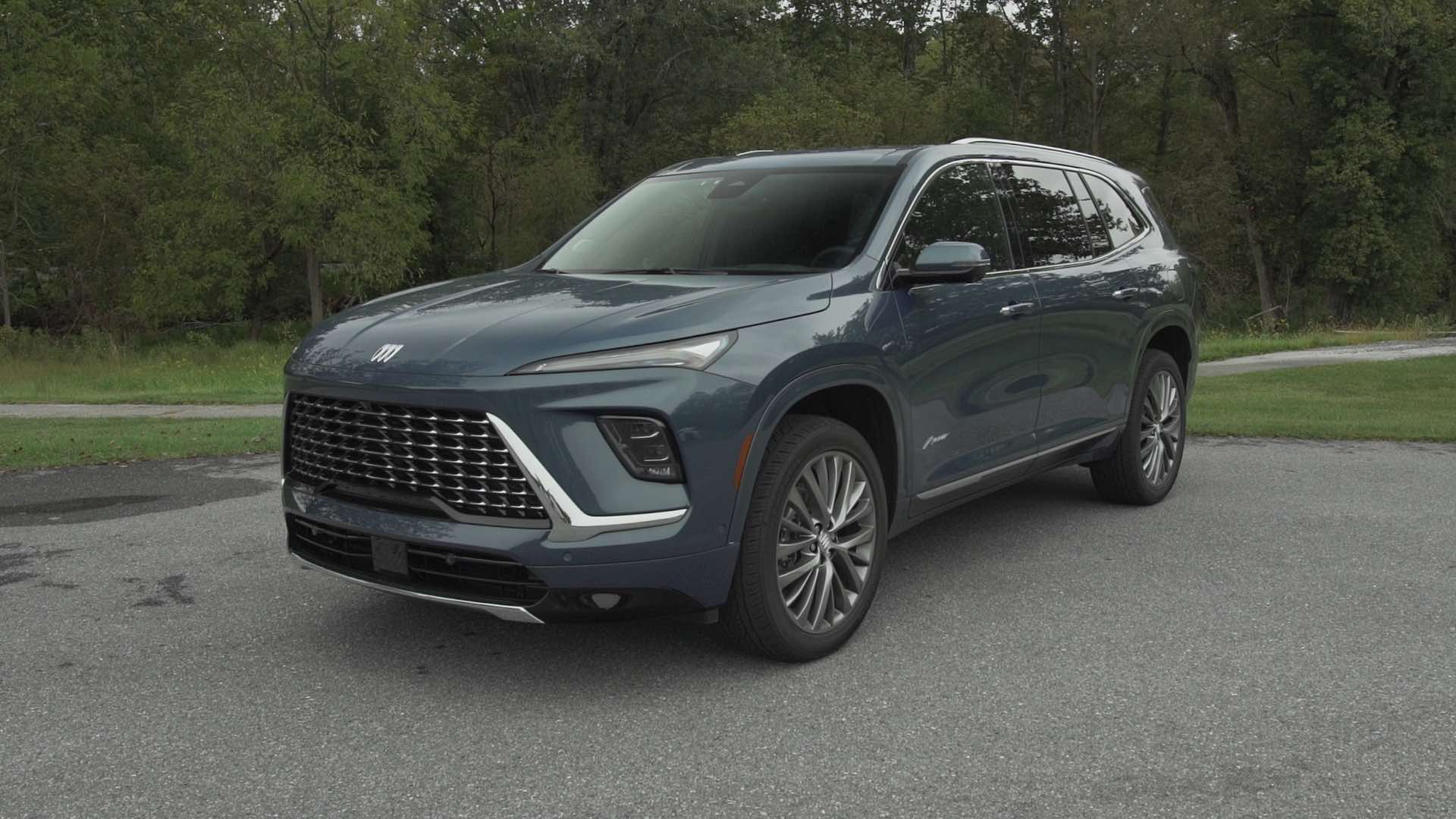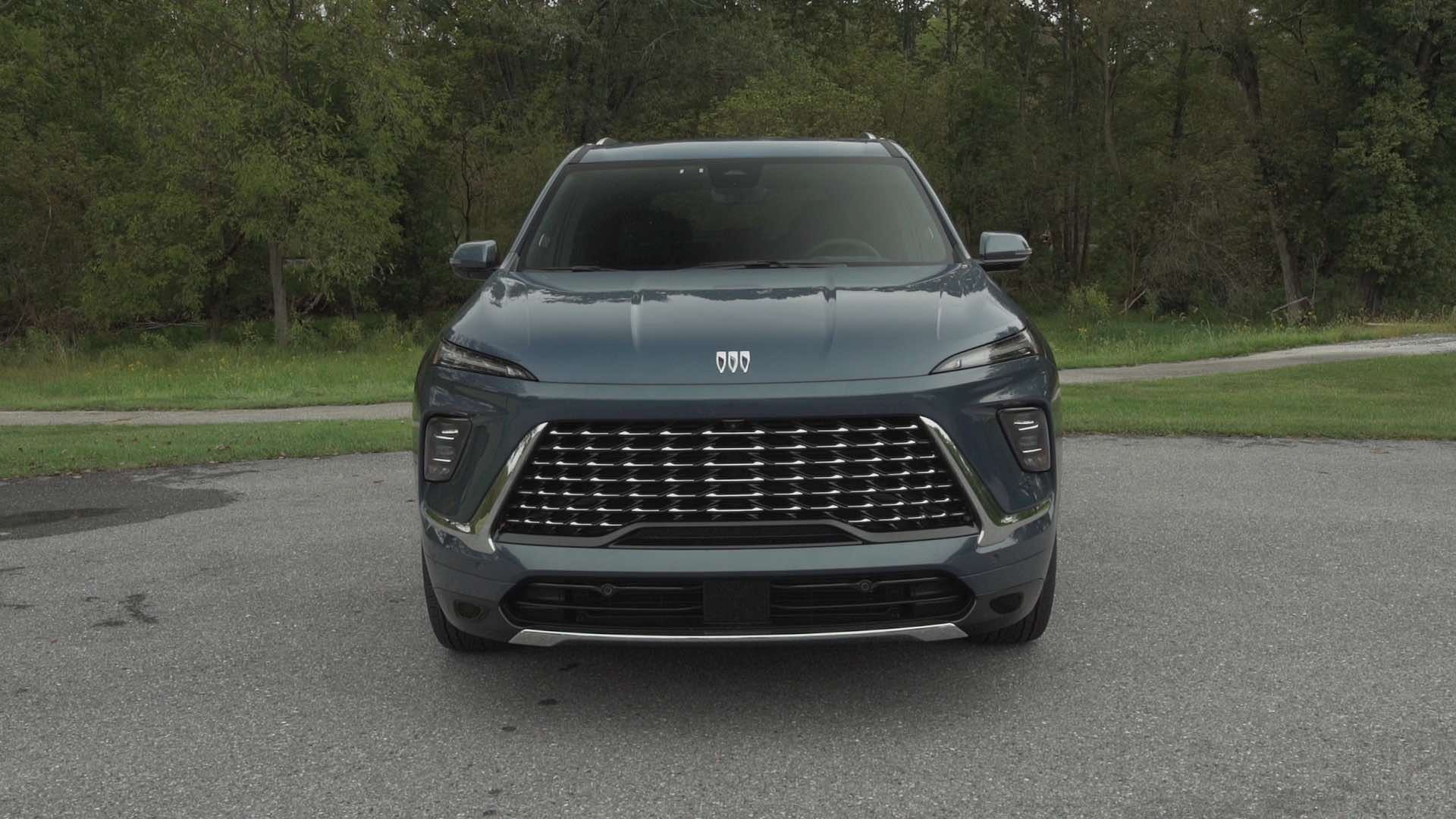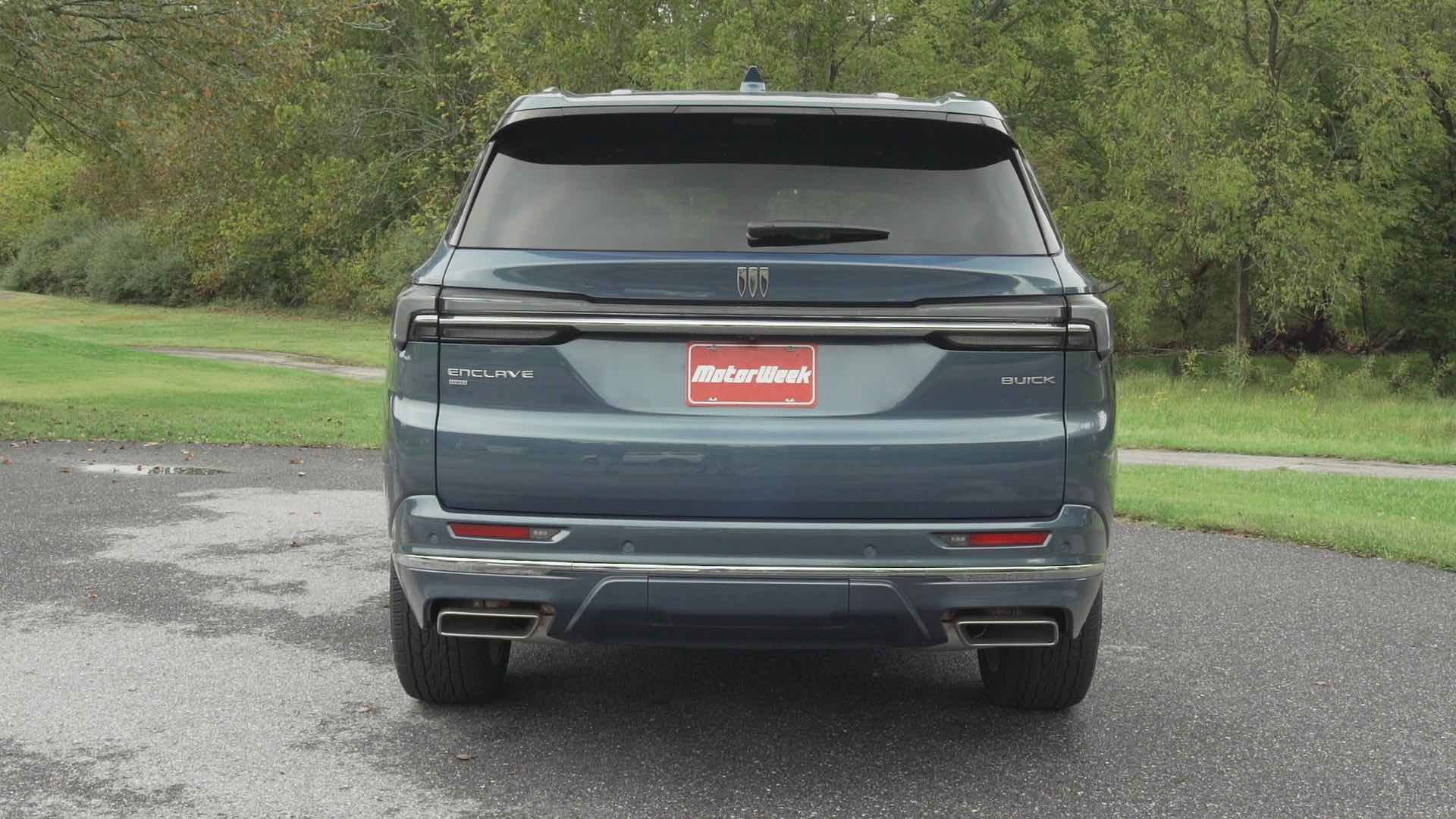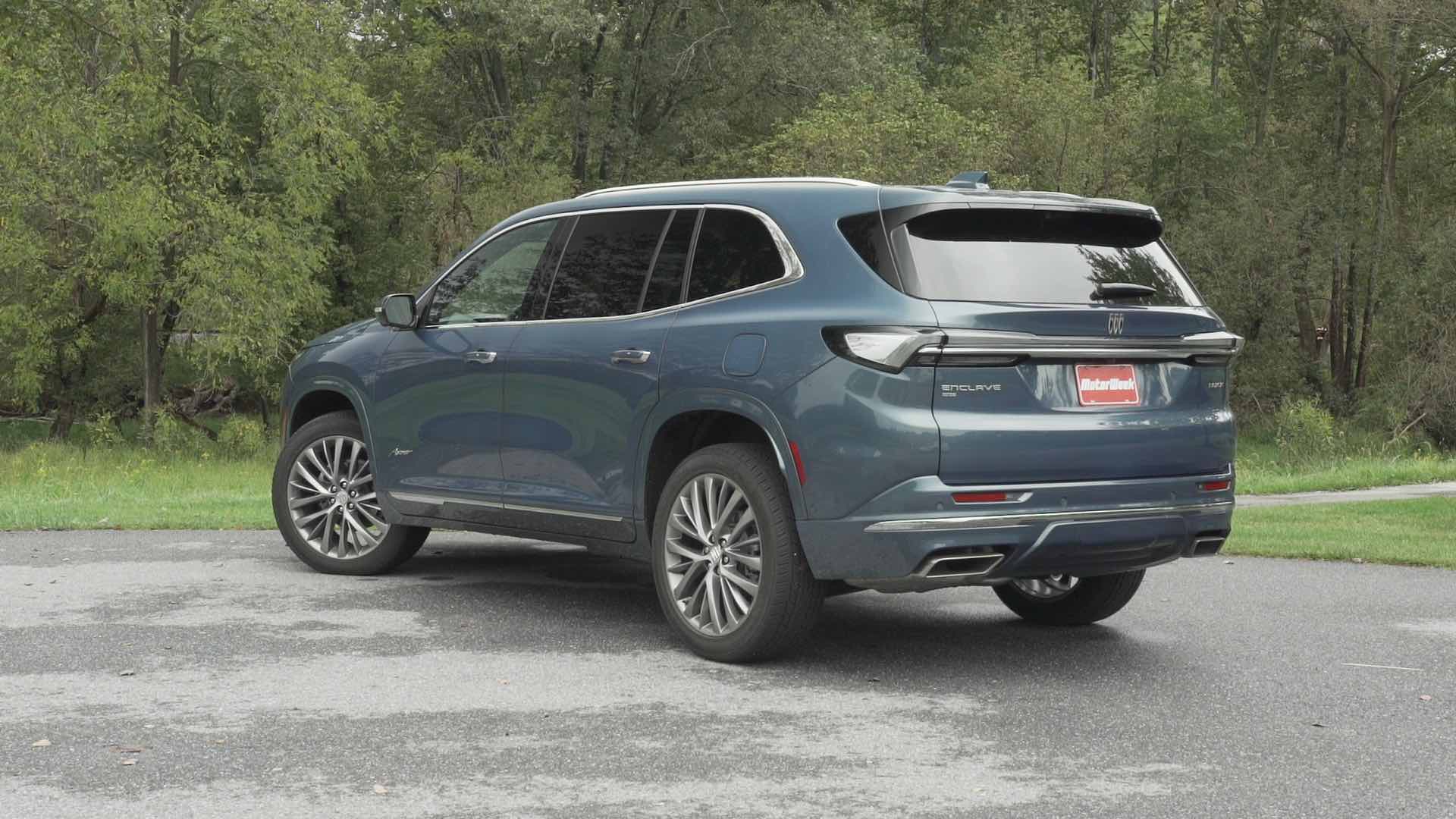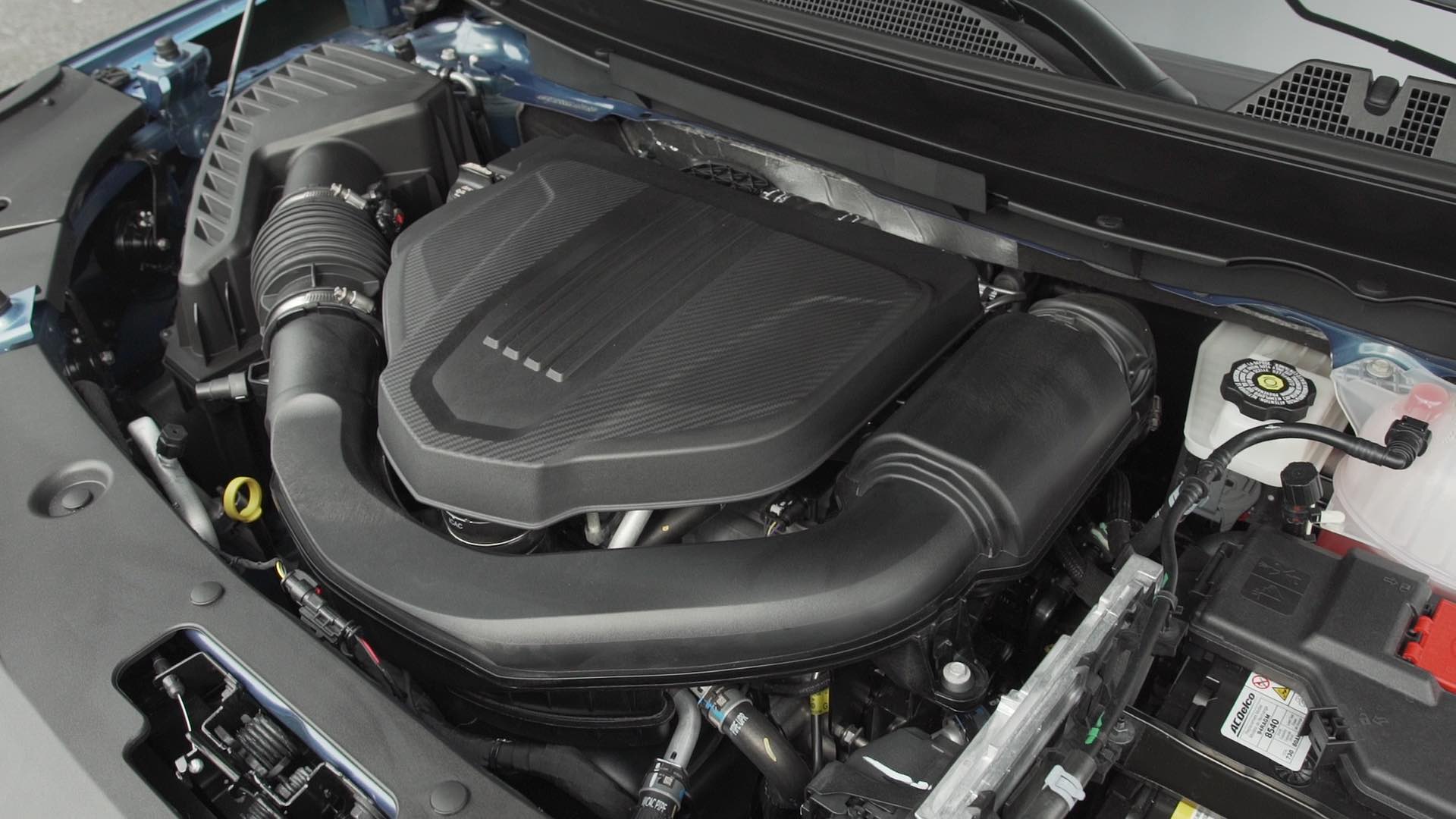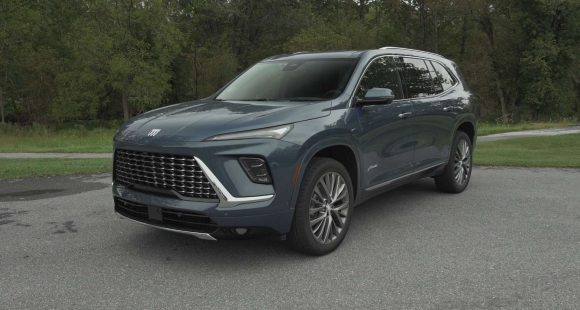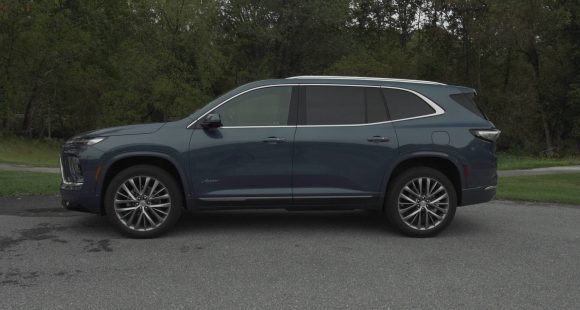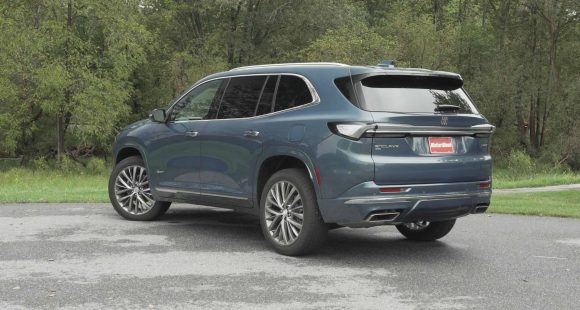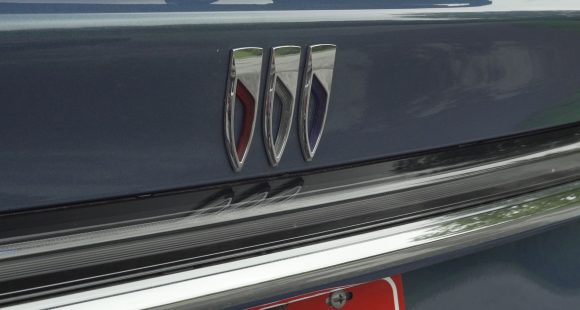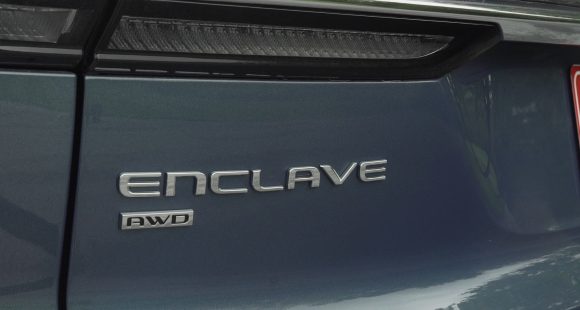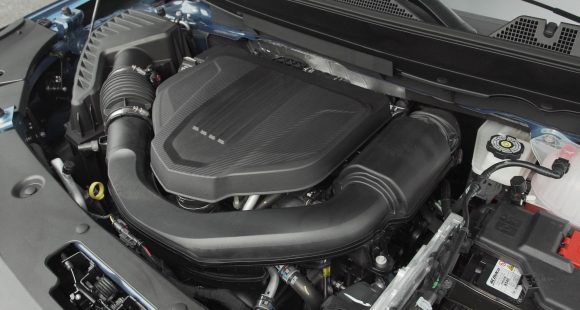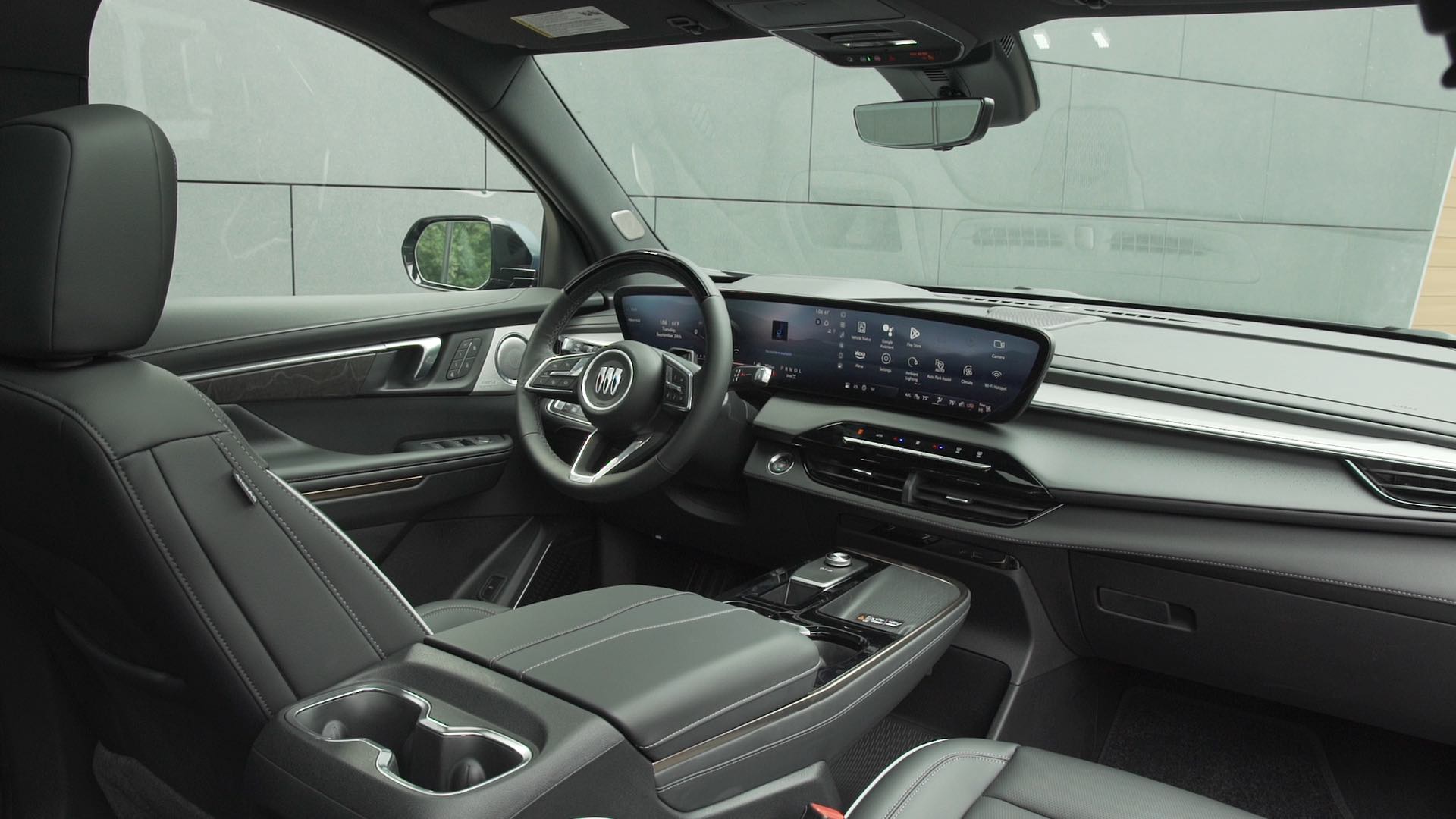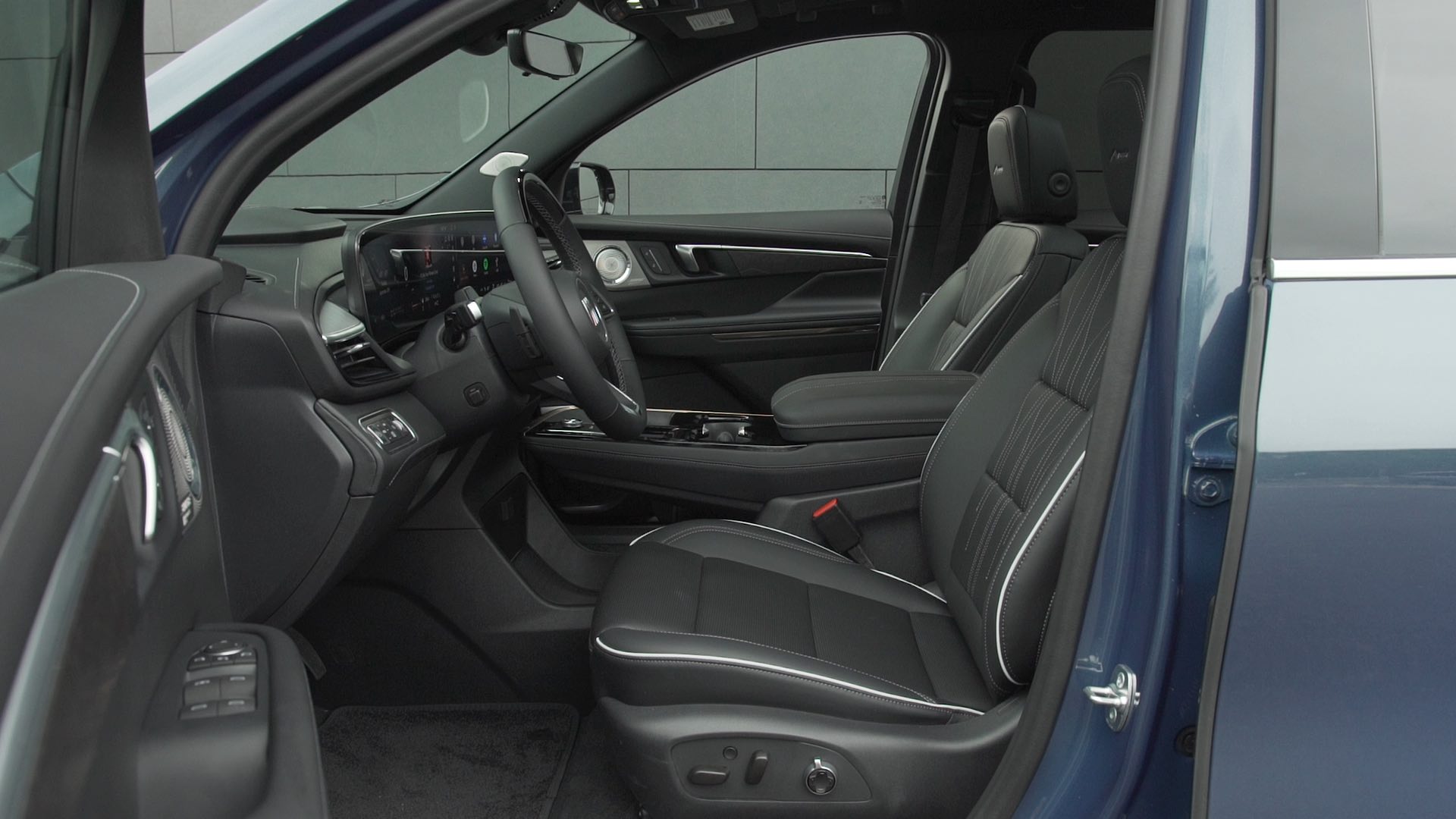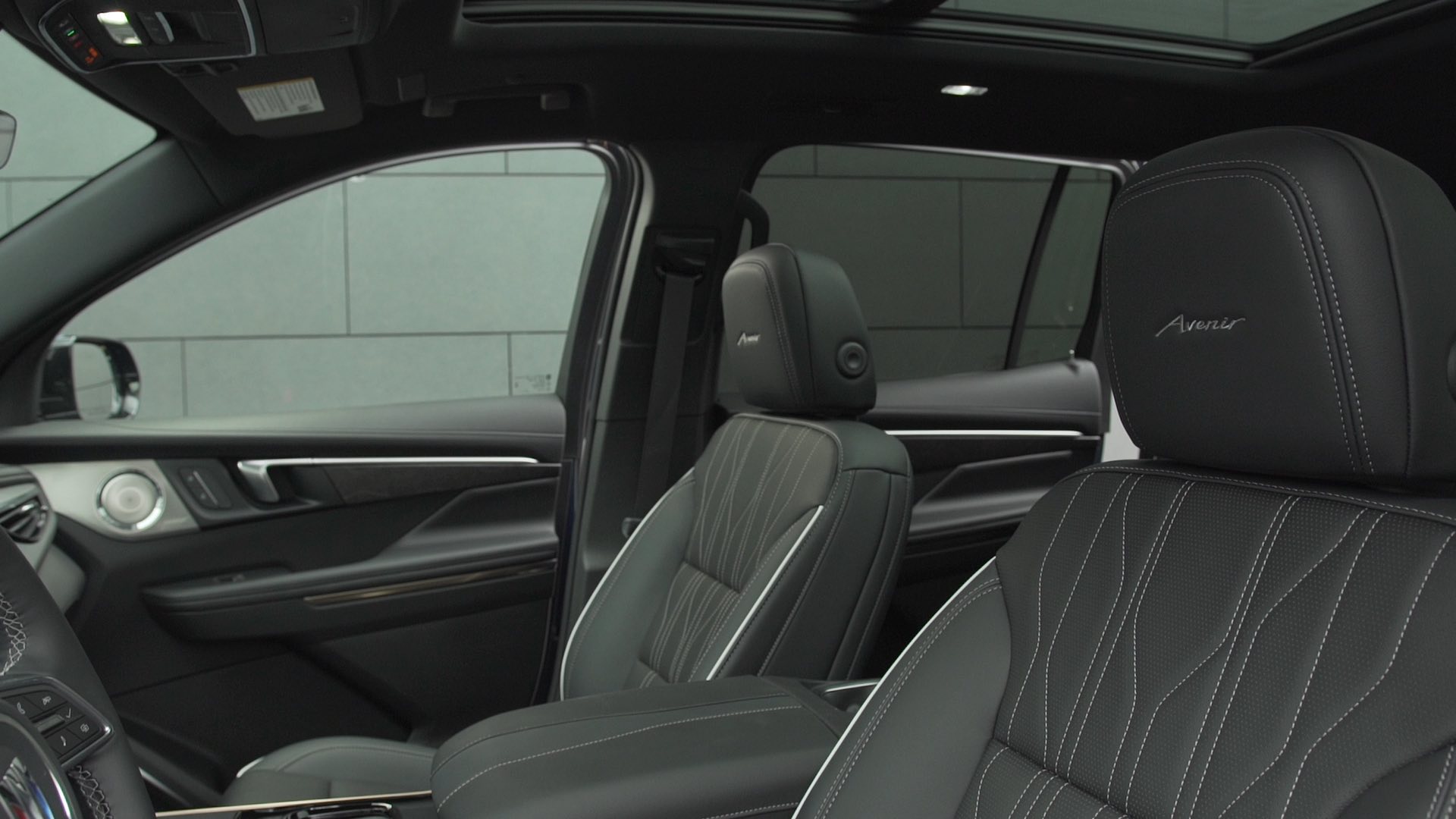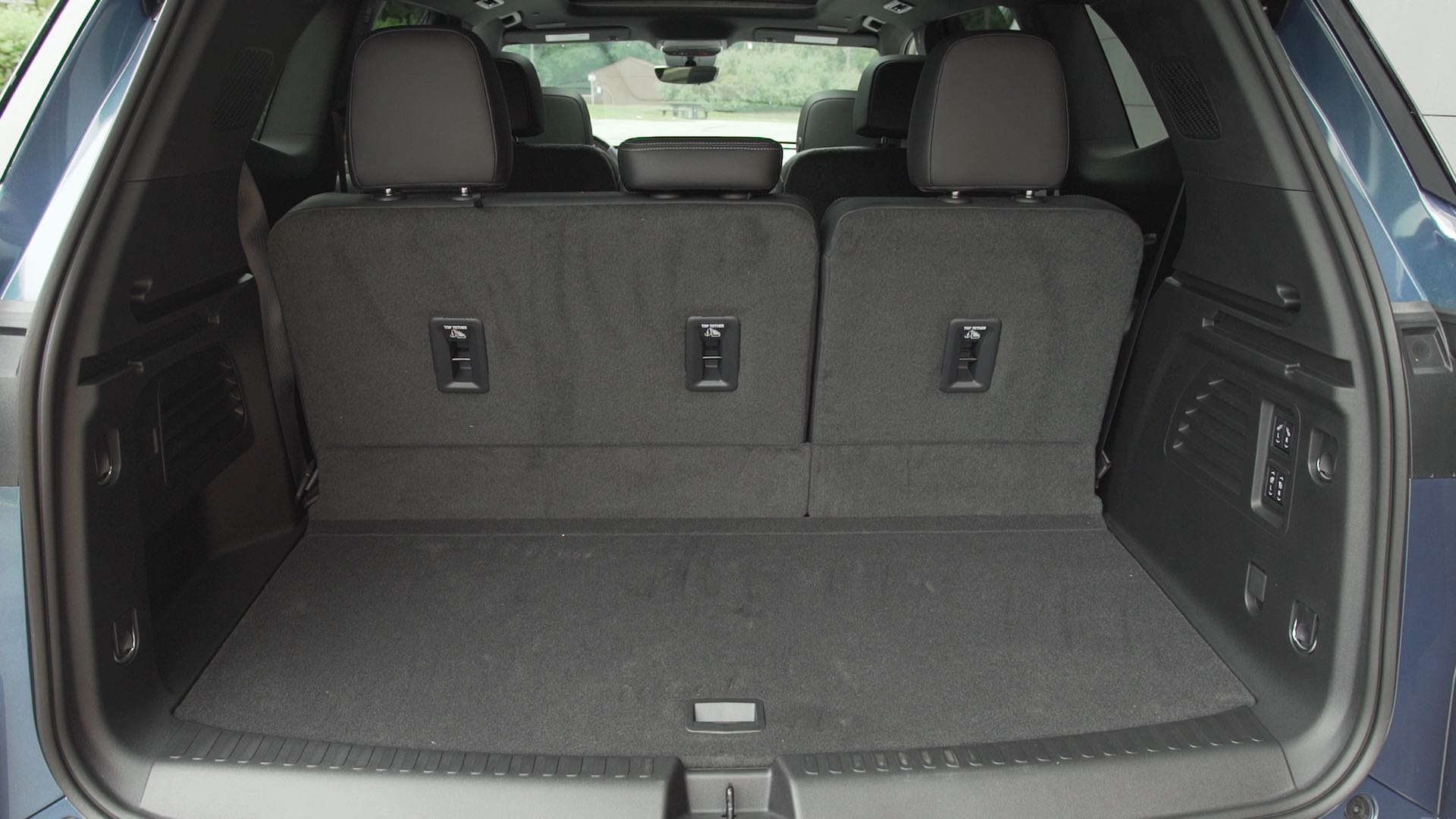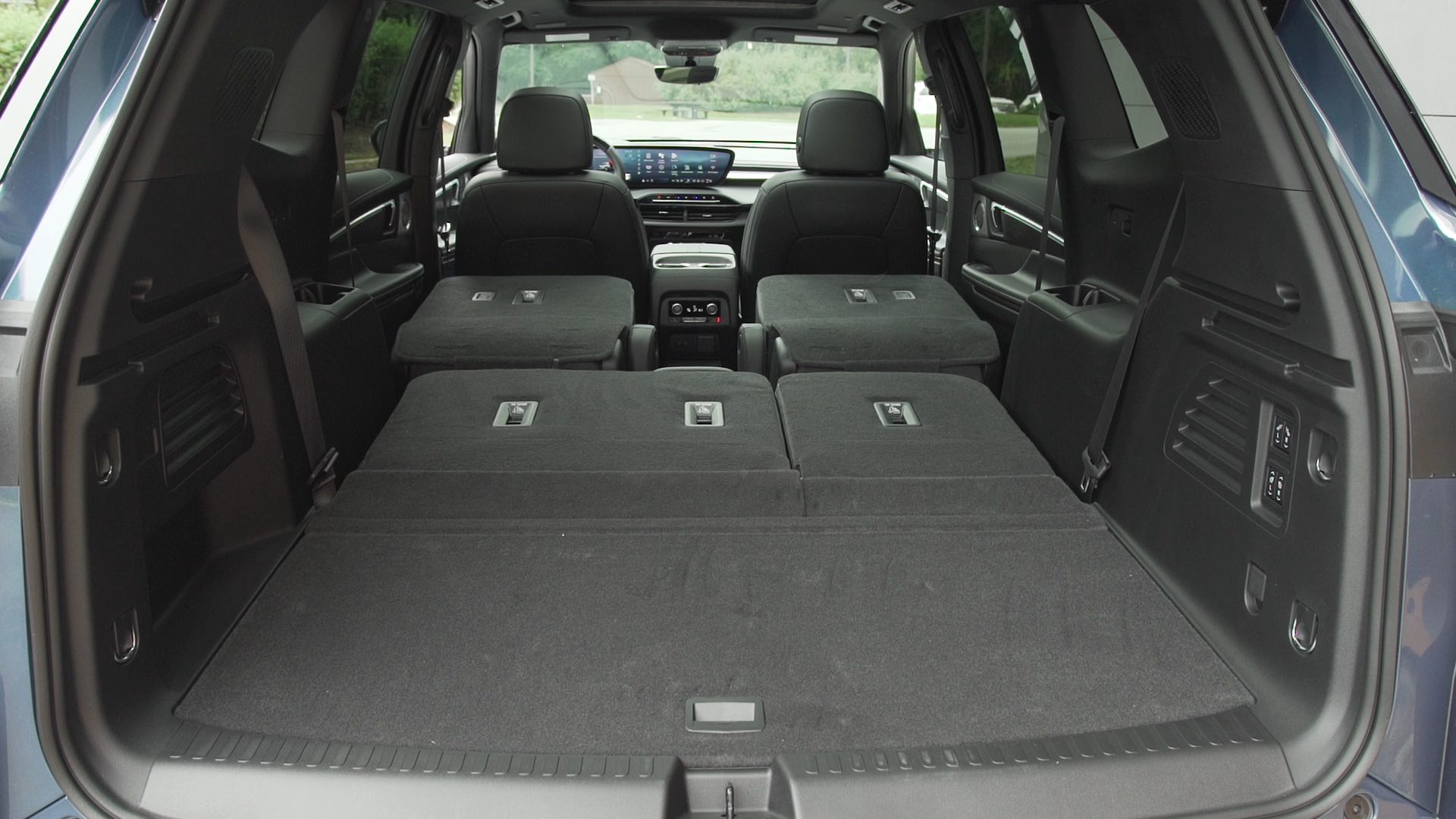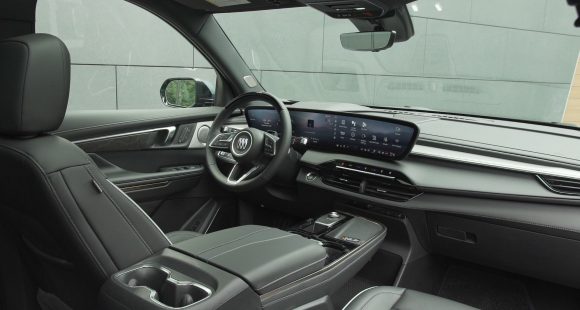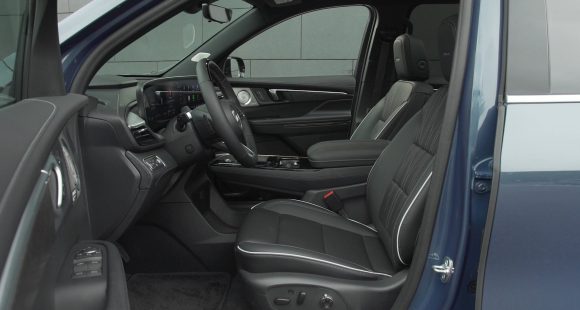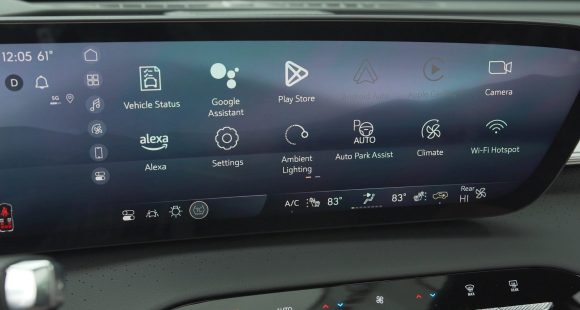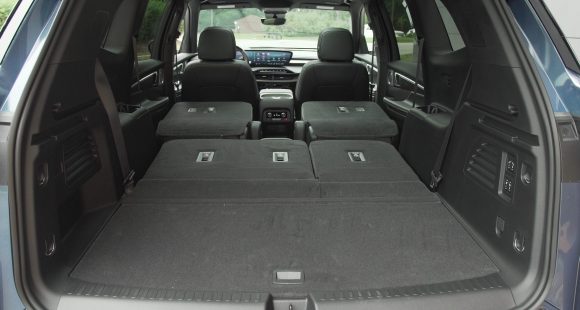2010 Audi A5 Cabriolet
Convertible season is here! And leave it to Audi to be ready with a new droptop, the A5 Cabriolet. Visually, it’s just as stunning as the coupe, but now for the real test. Let’s put on our Ray-Bans and head out on the highway. Cars don’t always make the transition from tin-top to convertible gracefully, but Audi has managed to keep their four-seat 2010 A5 Cabriolet beautifully proportioned.
Audi’s now familiar front end formula-big, rectangular LED-rimmed bi-Xenon headlights and a deep, drop jaw Nuvolari grille-is indistinguishable from the A5 hardtop. In profile, though, the power softtop makes for a longer, flatter trunklid. Whether you’re basking in the sun or keeping the rain at bay, the A5’s lines are pleasing from every angle.
Audi chose fabric over a metal droptop to save weight and bulk. It includes a glass rear window with defroster, and uses Audi’s new Acoustic Roof insulation to keep the cabin remarkably quiet. Top operation takes less than 20 seconds, even when driving up to 30 miles-per-gallon hour. Our tester’s burnt orange leather interior was trimmed tastefully in aluminum and wood. It proved comfortable for four adults, and as user-friendly as it was attractive.
 The dash caters to driver ergonomics. Gauges are clear and easy to read, and the thick-rimmed, multi-function, tilt-and-telescoping wheel is leather-wrapped. An array of airbags includes knee airbags for front-row occupants.
The dash caters to driver ergonomics. Gauges are clear and easy to read, and the thick-rimmed, multi-function, tilt-and-telescoping wheel is leather-wrapped. An array of airbags includes knee airbags for front-row occupants.
Audi’s Drive Select integrates operation of throttle, steering, and suspension, offering four distinct driver selected settings- Comfort, Auto, Dynamic, plus Individual. Feedback from Audi’s latest MMI hard-drive disc infotainment system is via the seven-inch screen mounted high in the center stack.
Our A5’s curvy, heavily-bolstered power front bucket seats featured neck-level heat vents. With the top up, there is of course sizable C-pillar blind spot. Luckily, our tester came equipped with Audi Side Assist, a useful blind-spot monitoring system in the side mirrors.
Thanks to the less bulky softtop, second-row occupants get a surprising amount of legroom, plus a wind diffuser, and rollover protection. Unusual for its class is a split folding rear seat that gives this Cabrio functional versatility. Filling all the seats still allows for a practical 10.2 cubic foot trunk, top up or top down. Most hardtop rivals have a fraction of that with the top down.
Like the Coupe, standard power is a direct-injected, turbocharged 2-liter I4. In the Cabrio it’s good for 211 horsepower and a stout 258 pound-feet of torque. For more power you’ll have to move up to the S5 Cabriolet with its supercharged 3.0-liter V6 rated at 333 horsepower and 325 pound-feet.
The 2.0, with standard front drive, transfers power through a CVT automatic. Our all-wheel drive Quattro uses a six-speed Tiptronic automatic with paddle shifters. There is no pure manual. With Quattro, this is a year-round convertible. Torque splits 40 percent front, 60 percent rear in routine driving.
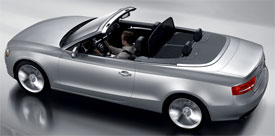 At the track, traction was in no short supply: zero to 60 took just 6.6 seconds. Turbo lag was almost non-existent, and shifts were well-spaced, if a little soft. The droptop A5’s relaxed demeanor didn’t hurt its quarter mile time: 15 seconds flat, at 90 miles-per-gallon hour.
At the track, traction was in no short supply: zero to 60 took just 6.6 seconds. Turbo lag was almost non-existent, and shifts were well-spaced, if a little soft. The droptop A5’s relaxed demeanor didn’t hurt its quarter mile time: 15 seconds flat, at 90 miles-per-gallon hour.
Through the low-speed slalom, the car’s heavily front-biased weight was apparent, but it still proved to be a nimble handler. Turn-ins were quick, and the car felt unusually solid for a convertible. We detected little cowl twist and shake. Body roll was present, but manageable.
Switchable ESP stability control, as well as ABS, are standard-issue. Four-wheel disc brakes stopped the A5 from 60 in a short average of 122 feet. Mild fade increased the distances slightly over six runs, and the pedal was soft, but stops remained smooth and straight.
Government Fuel Economy Ratings for our Quattro A5 Cabrio are 20 city, 26 highway. The front-drive droptop is rated at 23 city, 30 highway. On our test loop, the Quattro delivered an unsurprising 23.2 mpg on premium gas. Plus, with an Energy Impact Score of 14.9 yearly barrels of oil, and a Carbon Footprint of 8 tons of CO2, our A5 Cabriolet is relatively eco-friendly.
More so than prices, which start at $42,825 for the front-drive A5 Cabrio, and $44,925 for the all-wheel drive variant. But, go easy on options, the 60 grand mark is not hard to breach. Indeed, at that level it makes sense to upgrade to the S5 Cabriolet.
Still, even with the base 2010 Audi A5 Cabriolet, you’re getting a droptop that is easy on the eyes, with a sumptuous interior, and nearly impeccable road manners. Oh, and it will turn a few heads too. And, that test, like all the rest, this ragtop passes with ease.
Specifications
- Engine: Direct-injected, Turbocharged 2-Liter I4
- Horsepower: 211
- Torque: 258 Lb Feet
- 0-60 MPH: 6.6 Seconds
- 1/4 Mile: 15.0 Seconds @ 90 MPH
- 60-0 MPH: 122 Feet
- EPA: 20 MPG City/ 26 MPG Highway
- Mixed Loop: 23.2 MPG
- Energy Impact: 14.9 Barrels Oil/Yr
- CO2 Emissions: 8.0 Tons/Yr
2025 Buick Enclave
Buick’s Biggest Utility Gets More Premium Look, Less Premium Powertrain
Buick is now an all SUV brand with the three-row Enclave sitting at the top of their lineup. And for this all-new third generation, it looks like Buick has finally given it the true flagship treatment it deserves. Reason enough for us to see what else new this posh performer has in store.
Don’t think of this 2025 Buick Enclave as just a new third generation of Buick’s largest three-row SUV, but more of a total reboot for a luxury segment pioneer. Part of that reinvention is swapping out the 3.6-liter naturally aspirated V6 engine, that has been the heart of this large crossover since it arrived on the scene for 2008, for a new 2.5-liter turbocharged four-cylinder.
Though using two fewer cylinders, it rates 18 more horsepower at 328. The gain in torque is even greater, climbing from 266 to 326 lb-ft.
Power from a start and when tooling around town feels pretty good, but you do notice that engine working hard under the hood; there is more engine noise and it’s not as smooth as many competitors who have also made the switch to turbo-four power. Max towing rating remains at 5,000 lbs. The new standard automatic transmission loses a gear, dropping from nine to eight, a simplifying move we applaud. All-wheel drive is a $2,000 option with all trims.
The Enclave rides on the same front-wheel-drive based chassis that supports the Chevrolet Traverse and GMC Acadia. It remains the most luxurious of the three, though all have made big upward strides. And that luxurious feel is very evident inside where things appear special without flaunting it. Materials are vastly improved over the last gen, especially in top Avenir trim which is the choice for most Enclave buyers.
Front seats are very comfy, well suited for long days of highway travel. It’s hard to miss the 30-inch ultra-wide display, similar to Cadillac’s. It is big, but not intimidating as operation is very logical and you can easily configure things as you want them, including bringing the nav screen up full in front of the driver.
Front seats are very comfy, well suited for long days of highway travel.
Between the seats is a very substantial console with lots of storage space and standard wireless phone charging. There is definitely room for full-size adults in all three rows of seating. Big, plush captain’s chairs with all trims for the second row; and a less plush but still comfortable three-place third row.
GM’s Super Cruise has now made it to Buick’s lineup, available as a standalone package for any trim. It remains a favorite of ours for hands-off highway cruising. Despite feeling adequately powered on the street, the Enclave’s turbo-four felt a little out of its element at our Mason Dixon Dragway test track. There was very little jump off the line, just a slow wind up to 60 of 8.0 seconds, with the quarter-mile completed in 16.0 seconds flat at 92 mph.
We could really feel the Enclave’s weight in our handling course, about 150-lbs. over last year, even with less motor under the hood. But there was very little body roll, and no excessive oversteer or understeer. In panic braking runs, there was good feel through the pedal, and solid stops from 60 averaging a fine 111 feet.
To all of our eyes, the Enclave is bigger yet much better looking than before. Now more sophisticated using Buick’s PURE philosophy which emphasizes Purity in design, Unexpected details, Refined finishes, and Exceptional execution.
With all-wheel drive, Government Fuel Economy Ratings are 19 City, 24 Highway, and 21 Combined; we managed a great 24.9 mpg of Regular. That’s a slightly below average Energy Impact Score, consuming 14.2 barrels of oil yearly, with 7.0 tons of CO2 emissions.
No more Essence or Premium Enclaves, as the new gen brings new trim names along with it; the base option now being Preferred which starts at $46,395, and unless you choose white, you’ll be paying extra for all exterior colors. Just a short step from there to the Sport Touring for $48,795, and then a much bigger bounce up to Avenir at $59,395.
With so many big utes now aimed at luxury and near luxury buyers, it’s getting harder and harder for Buick to stand out. Being an all-utility brand, with one of the freshest lineups in the industry, will no doubt help. The 2025 Buick Enclave is a very stylish, well-equipped, well executed large three-row crossover that’s priced right.
Specifications
As Tested
- Engine: 2.5-liter turbo-4
- Transmission: 8-speed automatic
- Horsepower: 328
- Torque: 326 lb-ft.
- EPA: 19 City | 24 Highway | 21 Combined
- 0-60 mph: 8.0 seconds
- 1/4 Mile: 16.0 seconds at 92 mph
- Braking, 60-0 (avg.): 111 feet
- MW Fuel Economy: 24.9 mpg (Regular)








